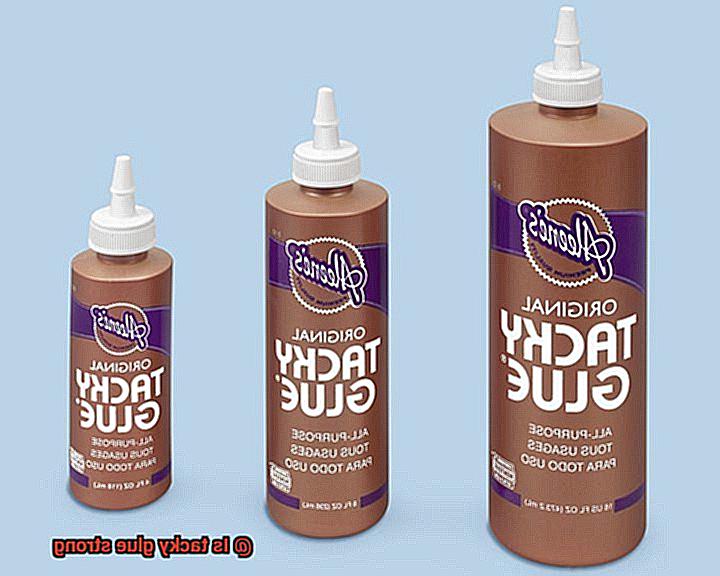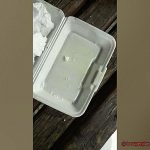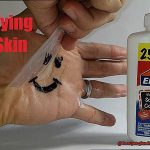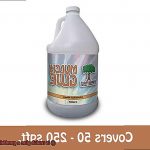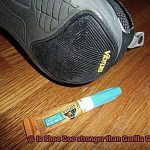Sick of your projects falling apart? Struggling to find an adhesive that can go the distance?
Well, look no further. Today, we’re delving into the world of tacky glue and its strength.
Tacky glue is a go-to for crafting and bonding different materials, but here’s the burning question – Is it strong enough for your needs?
In this post, we’ll explore tacky glue’s strength, its applications, and give you all the info you need to decide if it’s right for your next project.
So grab your glue guns and let’s see if tacky glue deserves a spot in your DIY arsenal.
Types of Tacky Glue
Contents
This versatile adhesive is a must-have in every crafter’s toolbox. In this blog post, we will explore the different types of tacky glue and their unique properties and applications. So, grab your crafting supplies and let’s get started.
Regular Tacky Glue:
Regular tacky glue, also known as the original formula, is the most commonly used type. It is perfect for a wide range of materials, including paper, fabric, wood, and plastic. This glue forms a strong bond and dries quickly, making it ideal for quick crafts or projects that need immediate bonding.
Clear Tacky Glue:
Do you love working with transparent or light-colored materials? Then clear tacky glue is your best friend. This glue dries clear, allowing your beautiful creations to shine through. It also offers a strong bond and quick drying time, making it perfect for glass, plastics, or any project where transparency is key.
Tacky Glue Gel:
When it comes to control and precision, tacky glue gel takes the spotlight. With its thicker consistency, this gel formula allows you to apply the glue precisely without any drips or runs. It’s great for vertical or overhead applications where regular liquid glue might be messy.
Fabric Tacky Glue:
Calling all textile lovers. Fabric tacky glue is specially designed for fabric and other textiles. It can withstand washing and remains flexible after drying, making it perfect for all your fabric crafts. Use it to attach appliques, embellishments, or even fix a loose hem.
Specialty Tacky Glues:
Do you have specific needs for your project? No worries. There are tacky glues formulated for foam materials or outdoor use. Foam tacky glue is perfect for bonding foam crafts, while outdoor tacky glue can withstand moisture and temperature changes, making it ideal for outdoor crafts or repairs.
Conclusion:
Tacky glue is a crafter’s best friend. With its strong bond, versatility, and different types to choose from, you can tackle any crafting project with confidence. Remember to choose the right type of tacky glue based on your project requirements and material compatibility. So, go ahead and let your imagination run wild with the magic of tacky glue.
Advantages of Tacky Glue
This versatile adhesive offers a multitude of advantages that make it a must-have for all your crafting needs. From its strong bonding capabilities and versatility to its quick drying time and ease of use, tacky glue is a game-changer in the crafting world. Let’s dive into the exciting advantages of tacky glue and discover why it should be your go-to adhesive for all your creative endeavors.
Advantage 1: Strong Bond
Tacky glue creates a durable and long-lasting bond between various materials such as paper, fabric, wood, and even some plastics. Say goodbye to weak adhesion. With tacky glue, your creations will stay intact for years to come.
Advantage 2: Versatility
Tacky glue is your ultimate adhesive companion for scrapbooking, card-making, and DIY projects. It adheres well to different surfaces and materials, making it suitable for various applications. From attaching embellishments to fabric crafts or constructing intricate paper designs, tacky glue has got you covered.
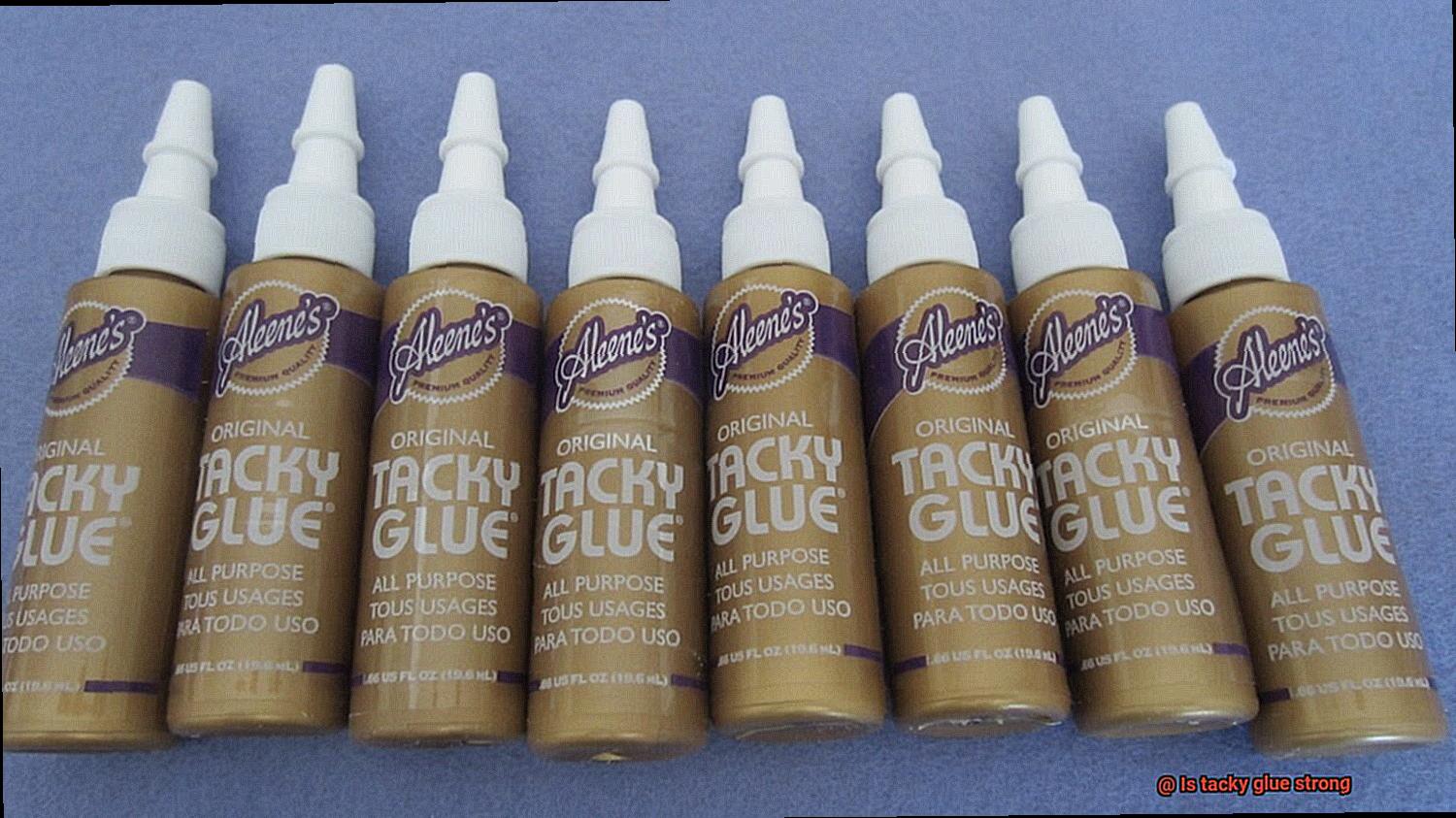
Advantage 3: Quick Drying
Time is of the essence in crafting projects. Thankfully, tacky glue has a relatively fast drying time. No more waiting around for glue to dry. With tacky glue, you can move on with your project without much delay, allowing for more productive crafting sessions.
Advantage 4: Non-Toxic Formulation
Crafting should be safe and enjoyable for everyone, including children. Tacky glue is typically formulated to be non-toxic, making it safe for use by both adults and kids. Use it with peace of mind in crafts with little ones or in enclosed spaces.
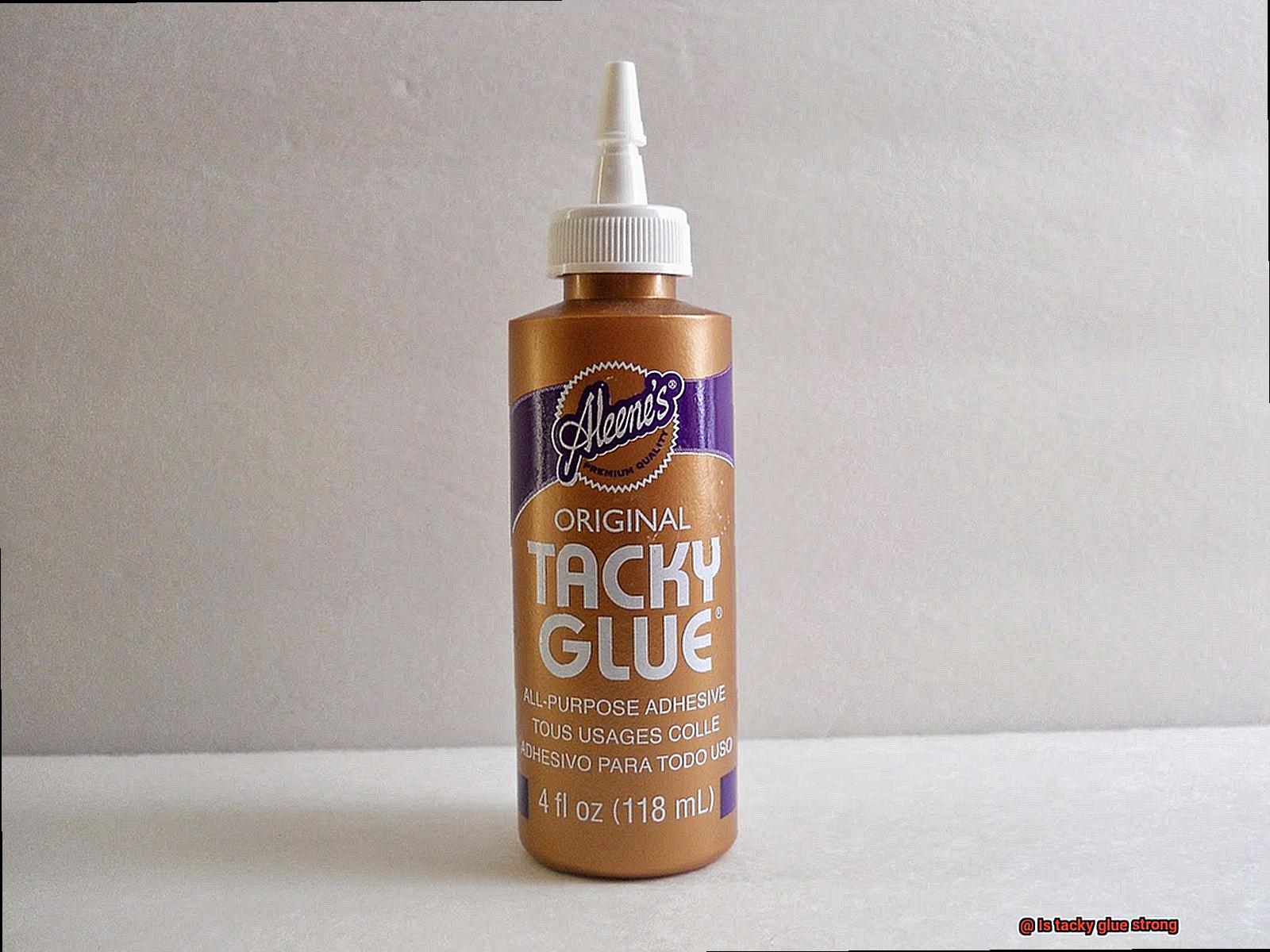
Advantage 5: Permanent and Flexible Bond
Tacky glue offers a permanent bond that remains flexible even after drying. Your hard work won’t fall apart or become brittle over time. Whether you’re making jewelry, fabric crafts, or home decor items, tacky glue ensures your masterpieces will stand the test of time.
Advantage 6: Easy Application
Crafting should be fun and stress-free, and tacky glue ensures just that with its easy application. Available in convenient squeeze bottles with fine tips, tacky glue allows for precise adhesive placement without any mess. The controlled flow of the glue is perfect for intricate or detailed projects.
Factors that Affect the Strength of Tacky Glue
We’re about to dive into the world of tacky glue and explore the factors that can impact its strength. Whether you’re working on a paper project, fabric creation, or wood masterpiece, understanding these key elements will ensure your glue bonds are as strong as Hercules himself. So grab your crafting tools and let’s get started.
Type of Material:
Tacky glue works wonders on porous materials like paper, fabric, and wood. These absorbent surfaces provide an ideal foundation for the adhesive to bond strongly. However, when it comes to non-porous surfaces such as plastic or metal, the bond may not be as robust. The smooth nature of these materials makes it difficult for the glue to adhere properly, resulting in weaker bonds. So remember, choose your materials wisely.
Surface Preparation:
A clean and dry surface is essential for optimal bonding strength. Dust, grease, or other contaminants can act as barriers between the glue and the material, weakening the bond. Ensure you wipe down your surface with a damp cloth or use a mild detergent to remove any dirt or grease for a strong adhesive connection. A squeaky-clean surface sets the stage for a powerful bond.
Application Technique:
The way you apply tacky glue can make a world of difference in its strength. To achieve uniform coverage and maximum adhesion, apply an even layer of glue onto the surface. Avoid uneven application or excessive use of glue, as this can result in weak bonds. Remember, a little goes a long way. Follow the manufacturer’s instructions for best results and watch your project come together flawlessly.
Drying Time:
Patience is key when it comes to tacky glue. Rushing the drying process by subjecting the glued material to excessive heat or pressure can weaken the bond. Allow sufficient time for the glue to dry naturally and cure properly. This will ensure a strong connection between the adhesive molecules and the material. Don’t rush the magic of tacky glue – let it work its wonders at its own pace.
Environmental Factors:
The environment in which you use tacky glue can also affect its strength. Extreme temperatures, whether too hot or too cold, can hinder proper drying and weaken the bond. Similarly, high humidity levels can slow down the drying process and impact overall strength. Aim for a controlled environment with moderate temperature and humidity levels for optimal bonding. Create in a space that fosters the strongest bonds.

Best Uses for Tacky Glue
Tacky glue, the unsung hero of the crafting world. This versatile adhesive may not possess the same fame as its counterparts, but it certainly packs a punch when it comes to getting the job done. Whether you’re a seasoned DIY enthusiast or just looking to tackle a few minor household repairs, tacky glue is a must-have in your arsenal. So, let’s delve into the best uses for this sticky superstar and discover how it can elevate your crafting game and save the day in those unexpected repair situations.
Crafting and DIY projects are where tacky glue truly shines. Its ability to adhere well to paper makes it a go-to option for paper crafts like scrapbooking, card making, and collage. No more worries about your precious memories falling apart – tacky glue has got you covered.
But that’s not all – tacky glue is also a master at attaching embellishments to various surfaces. From jazzing up a clothing item with rhinestones to revamping a picture frame with buttons, tacky glue provides a secure hold that will withstand the test of time.
Now, let’s talk about fabric. Tacky glue is a game-changer for fabric projects. Whether you’re attaching fabric to fabric, fabric to other materials, or even repairing small tears or holes in garments, tacky glue’s flexibility when dry allows the fabric to move without compromising the bond. Say goodbye to those pesky sewing needles and hello to hassle-free fabric projects.
Tacky glue isn’t limited to just paper and fabric. It’s also perfect for bonding lightweight materials like foam, felt, and wood. So go ahead and create those adorable foam ornaments or attach wooden accents to your next project with confidence knowing that tacky glue has got your back.
Now, let’s not forget about its handy role in household repairs. Tacky glue can fix broken ceramics, repair small cracks in household items, and reattach loose parts. It’s like having your very own DIY superhero on standby, ready to save the day whenever those unexpected repairs come knocking.
Remember, though, tacky glue may not be suitable for heavy-duty repairs or situations where extreme strength is required. However, for everyday crafting and minor household fixes, it offers excellent holding power that will get the job done.
When to Avoid Using Tacky Glue
Tacky glue, the unsung hero of the crafting world, is like a DIY superhero ready to save the day with its excellent holding power for paper crafts, fabric projects, embellishments, and even minor household repairs. However, like any superhero, it has its limitations. In this blog post, we will explore situations where it’s best to avoid using tacky glue and suggest alternative adhesive options that can ensure the success and longevity of your projects.
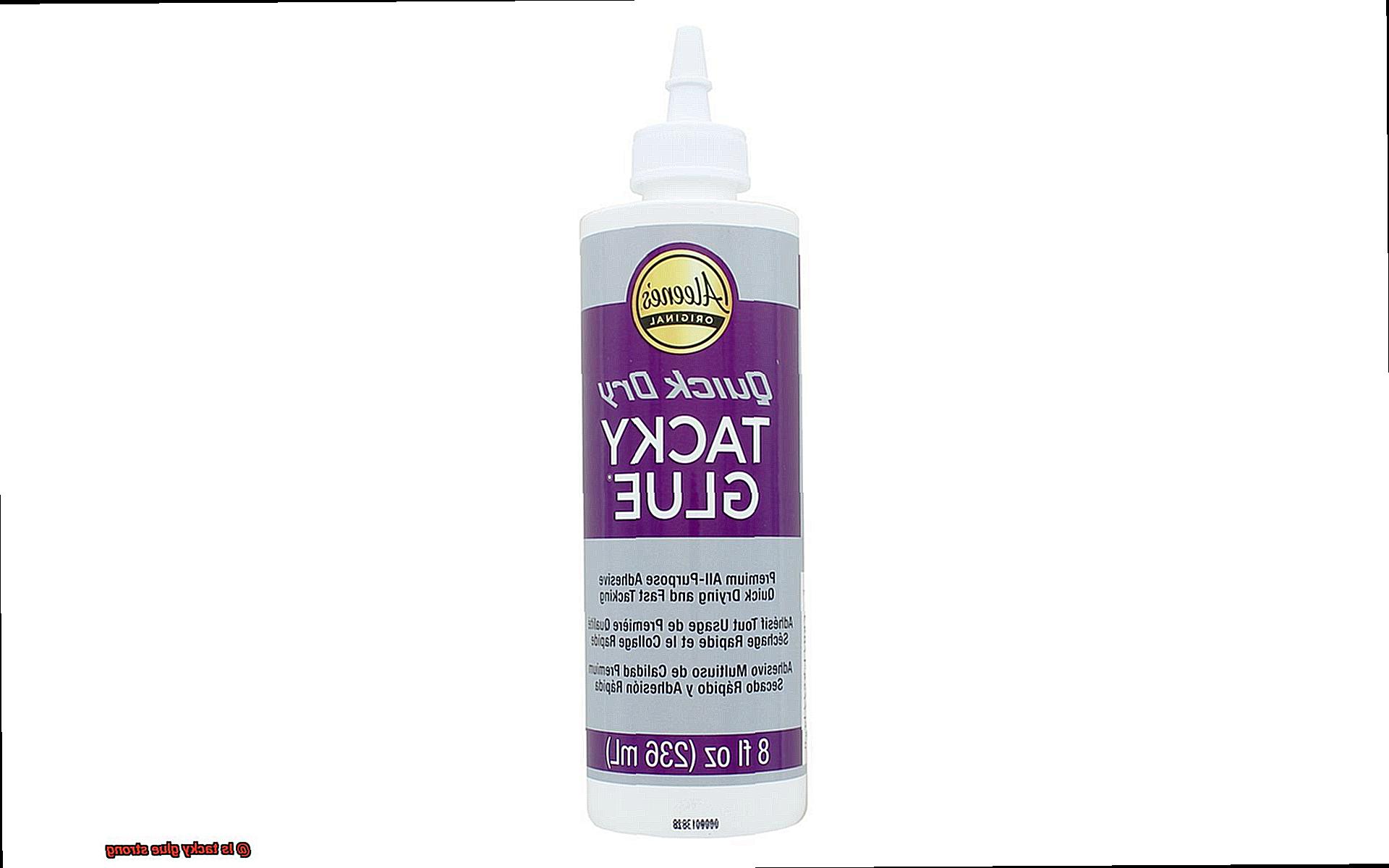
Porous Materials:
Tacky glue loves to seep into porous materials like wood or fabric, making it challenging to control the amount of glue applied and potentially leaving unsightly stains. Instead, opt for specific adhesives designed for porous surfaces such as wood glue or fabric glue. These specialized adhesives provide better control, avoiding messy seepage while ensuring a strong bond.
Quick-Drying Needs:
If you require an adhesive that sets quickly for bonding lightweight objects or securing delicate pieces together, tacky glue may not be the best choice due to its slower drying time. Super glue or quick-setting epoxy are excellent alternatives that offer rapid bonding and drying capabilities.
High Temperatures or Moisture Exposure:
Tacky glue is water-based and can lose its bond strength when exposed to excessive moisture or extreme heat. For outdoor projects or those requiring water resistance, consider using adhesives specifically formulated for these conditions, such as waterproof epoxy or construction adhesive.
Heavy-Duty Applications:
While tacky glue has decent holding power, it may not be suitable for heavy-duty applications. To ensure a secure and long-lasting bond when dealing with heavy objects, opt for stronger adhesives like epoxy or construction adhesive that provide superior strength.
Flexible Materials or Joints:
Tacky glue can become brittle over time and may not withstand constant bending or flexing. For projects involving flexible materials or joints that require movement, it is advisable to use adhesives specifically designed for flexibility, such as flexible fabric glue or flexible epoxy.
Alternatives to Tacky Glue
Tacky glue may be a go-to adhesive, but sometimes you need to explore other options to elevate your crafting game. Fear not. As an adhesive expert, I’m here to guide you through a world of alternatives that will ensure your creations shine. Let’s dive in and uncover the perfect adhesives for your next masterpiece.
White School Glue (PVA Glue):
- Boasting a similar consistency to tacky glue, this adhesive dries clear, making it ideal for school projects and crafts.
- While it may not have the same strength as tacky glue, it remains effective for a wide range of projects.
E6000 Craft Adhesive:
- With superior strength and remarkable versatility, this adhesive bonds various materials, from wood to fabric.
- The longer drying time is well worth the wait, as it provides a bond that can withstand heavy-duty projects.
Hot Glue Guns:
- These quick-drying adhesive sticks harden upon cooling, offering a robust bond for fabrics, plastics, and foams.
- Keep in mind that hot glue guns may not be suitable for delicate or heat-sensitive materials.
Double-Sided Tape:
- Easy to use with a strong bond for lightweight materials, this tape is perfect for quick fixes and paper crafts.
- However, it may not hold up well under heavy or bulky items.
Super Glue (Cyanoacrylate Adhesive):
- Known for its fast-drying nature and incredible strength, super glue creates an instant bond between various surfaces.
- Exercise caution as this adhesive forms a permanent bond, which may not be suitable for all projects.
Epoxy Resin:
- For heavy loads and extreme conditions, epoxy resin is the specialized adhesive you need.
- Ideal for bonding wood, metal, and fiberglass, this adhesive forms a durable bond that can withstand the test of time.
Tips for Using Tacky Glue
Tacky glue is a popular choice due to its strength and versatility. In this blog post, we will share some effective tips on how to use tacky glue and achieve strong bonds for your crafts.
Prepare the Surfaces:
Before applying tacky glue, ensure that the surfaces you will be bonding are clean and dry. Removing any dirt, dust, or oils that could interfere with the adhesive bond is crucial. By thoroughly cleaning the surfaces, you can achieve better adhesion and a stronger bond.
Apply Thin Layers:
To maximize the effectiveness of tacky glue, it is important to apply it in thin, even layers. This prevents the glue from drying too thick, which can reduce its effectiveness. Applying a thin layer of glue allows it to dry faster and create a stronger bond. Avoid using too much glue, as excessive squeezing out can result in a messy project.
Apply Pressure:
After bonding the surfaces together with tacky glue, applying pressure is essential to enhance the strength of the bond. You can achieve this by firmly pressing the bonded parts together or using clamps or weights to hold them in place. Applying pressure allows the glue to fully adhere to the surfaces and create a strong bond.
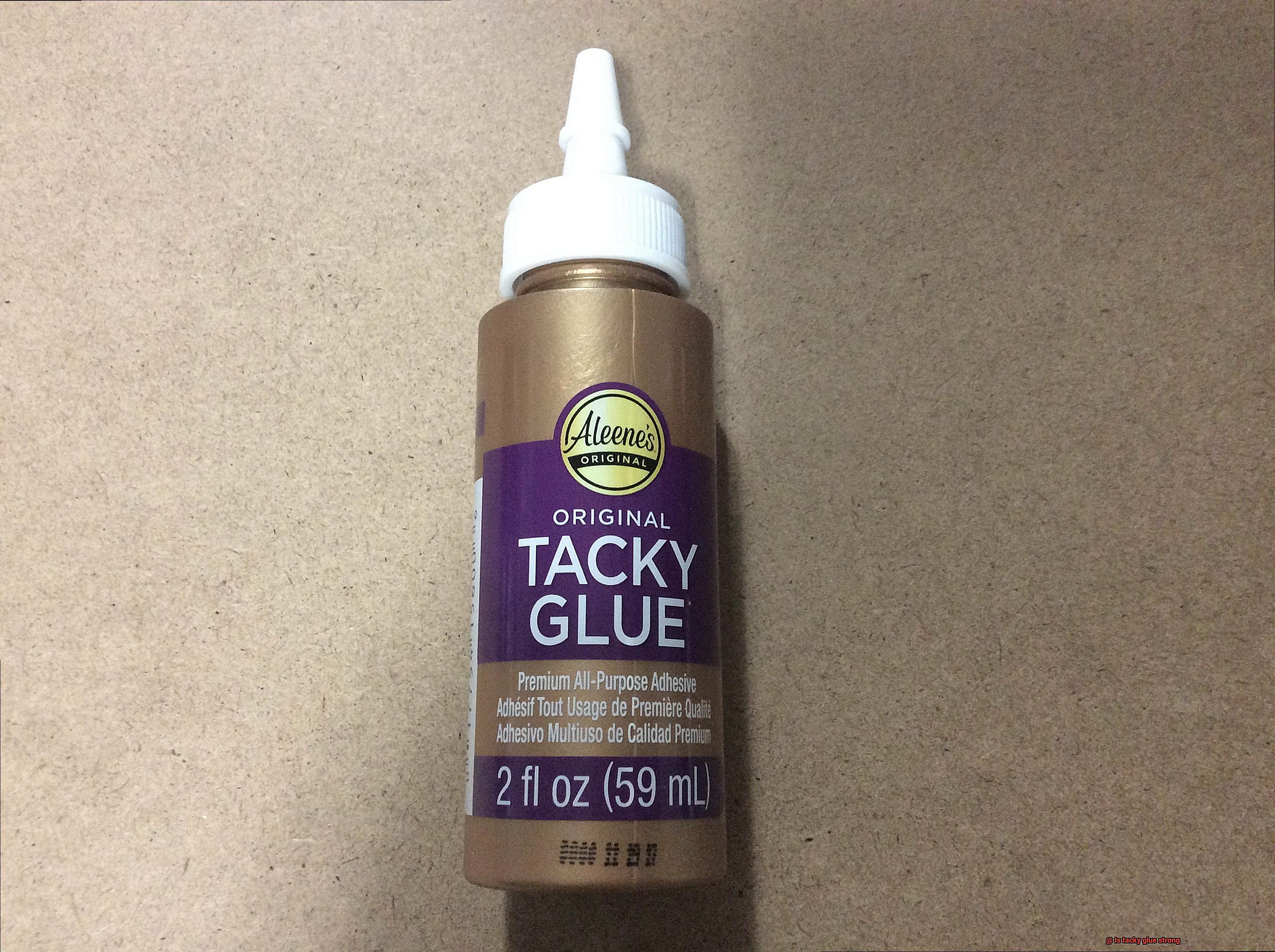
Allow Adequate Drying Time:
While tacky glue dries relatively quickly, it is important to give it enough time to fully cure and reach its maximum strength. Avoid disturbing or moving the bonded parts during this time to prevent weakening the bond. We recommend waiting at least 24 hours before handling or moving your project.
Double Gluing for Porous Materials:
When working with porous materials like fabric or foam, double gluing can provide a stronger and more durable bond. Apply tacky glue to both surfaces before bonding them together. This technique ensures better adhesion and a stronger bond for materials that are difficult to bond.
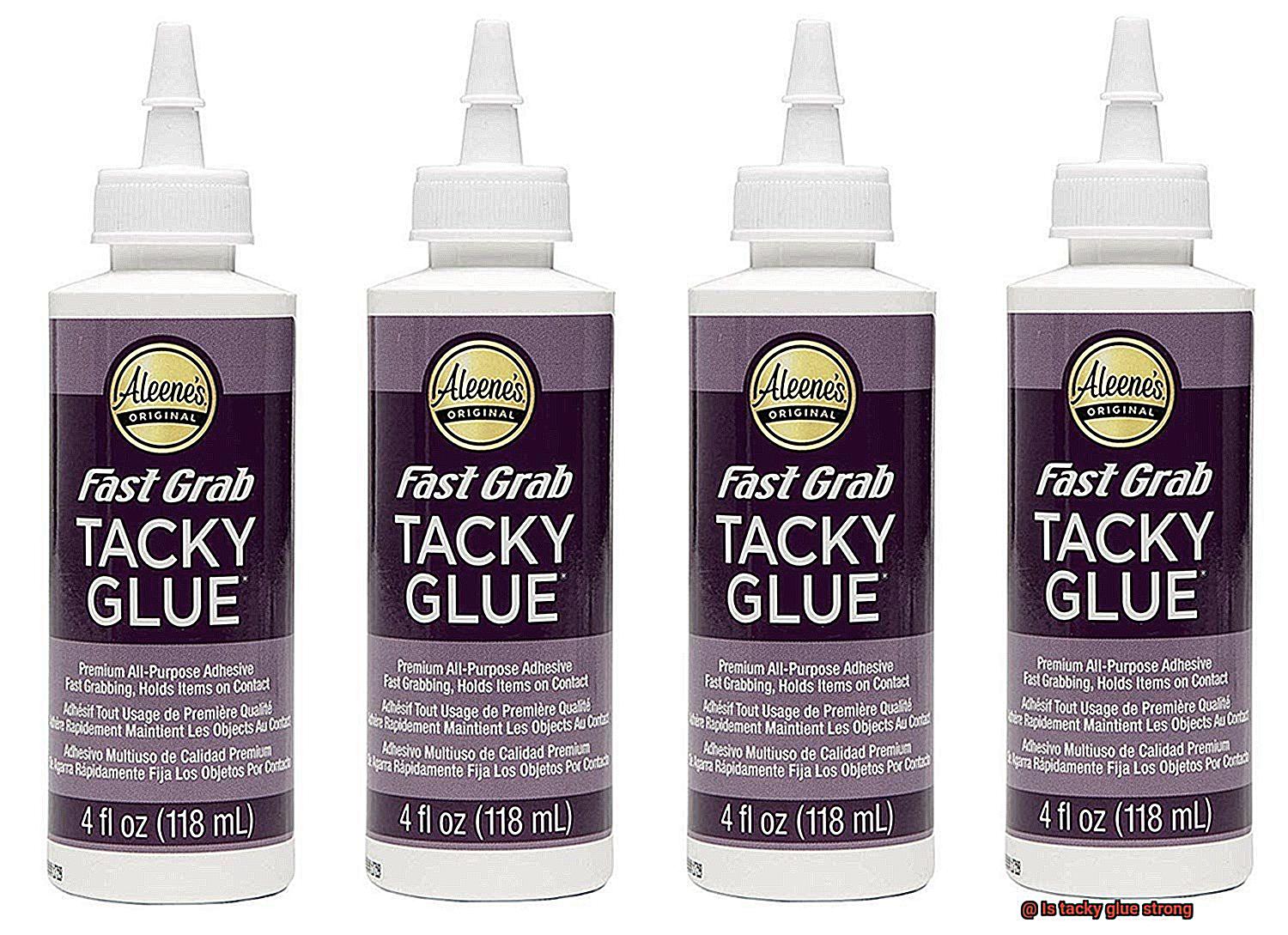
Safety Precautions when Using Tacky Glue
Before embarking on your sticky crafting journey, it is crucial to familiarize yourself with the safety precautions that will ensure both your enjoyment and well-being.
Read and Follow Instructions:
Begin with a simple yet essential rule—reading the instructions. The manufacturer’s guidelines provide valuable insights into application techniques, drying times, and specific safety measures. Embrace these guidelines as they are tailored to maximize your experience with tacky glue.
Ventilation is Key:
Crafting in a well-ventilated area is paramount. Protect yourself from inhaling any fumes that may escape during the drying process. Open those windows wide or employ fans to infuse your creative space with a breath of fresh air.
Guard Those Precious Paws:
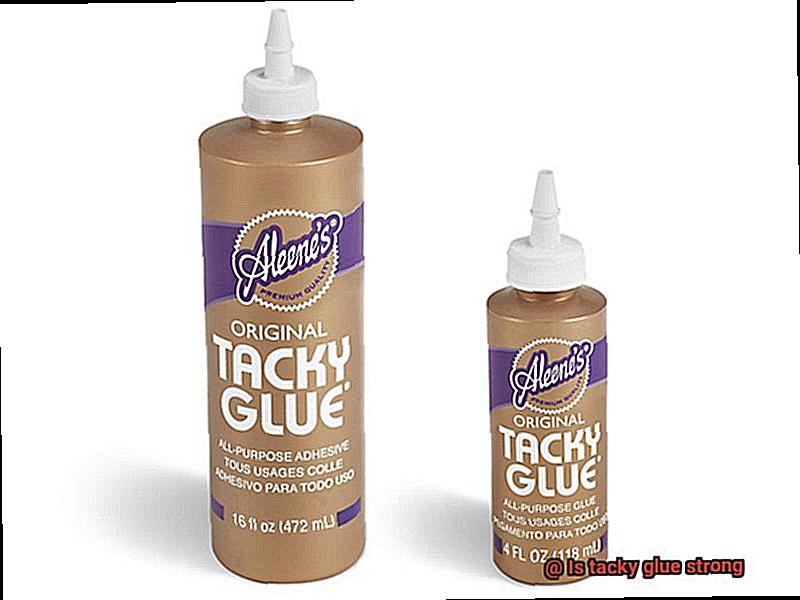
Donning gloves while working with tacky glue not only shields your hands from potential irritations or allergies but also simplifies the cleanup process in case of accidental spills. Prioritize safety first and minimize the mess second.
Eyes Are Precious:
Our eyes are the windows to our crafting world, and we must protect them from tacky glue’s mischievous games. If any adhesive finds its way into your eyes, immediately flush them with water and seek medical attention if necessary. Eye safety should never be compromised.
Keep It Away from Little Ones and Pets:
While dry tacky glue is non-toxic, ingestion can lead to stomach discomfort or other health issues. Store it securely out of reach of curious children and furry friends to avoid any unwelcome adventures.
Prompt Cleanup is Vital:
Procrastination has no place when it comes to tidying up spills or excess glue. Tacky glue can be a formidable opponent once dried, so wipe away any surplus while it remains wet. Future you will thank you for the effortless cleanup.
Extra Protection for Extended Exposure:
For ambitious projects that demand prolonged contact with tacky glue, consider wearing a dust mask or respirator. This additional layer of protection minimizes inhalation of fine particles released during the drying process. Safety should always be a fashion statement.
Seal It Tight:
Remember to tightly close glue bottles when not in use. Dried-out glue is a crafter’s worst nightmare, leaving their adhesive dreams in tatters.
XfiAcVZ4Dxk” >
Conclusion
Tacky glue, a popular adhesive in the crafting world, is known for its strength. But just how strong is it? Well, let me tell you, tacky glue packs a serious punch when it comes to holding things together. Its bond is tough and resilient, making it perfect for a variety of projects.
Whether you’re working with paper, fabric, wood, or even plastic, tacky glue has got your back. It forms a secure connection that can withstand the test of time. No more worrying about your creations falling apart.
But what sets tacky glue apart from other adhesives? It’s all in the formula. Tacky glue contains special ingredients that give it that extra oomph. It dries clear and flexible, ensuring that your projects not only stay intact but also maintain their original appearance.
And don’t underestimate its versatility either. Tacky glue can be used for both delicate crafts and heavy-duty applications. From intricate jewelry making to repairing broken household items, this adhesive does it all.
So next time you’re wondering if tacky glue is strong enough for your project, rest assured knowing that it’s up to the task. Its strength and reliability make it a go-to choice for crafters and DIY enthusiasts alike.
In conclusion, tacky glue is indeed strong – like Hulk-level strong. Its powerful bond will keep your creations together with unwavering strength.

